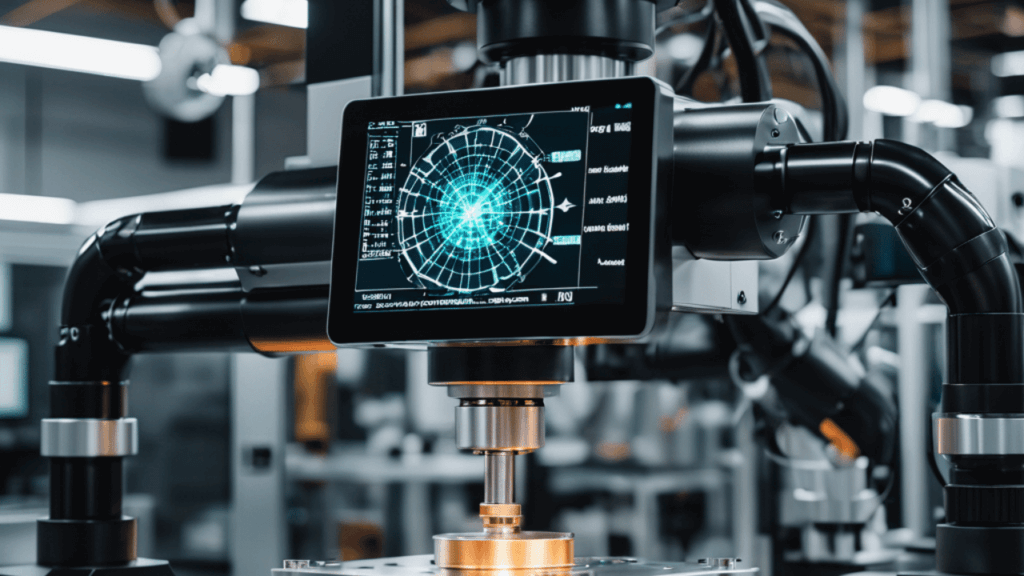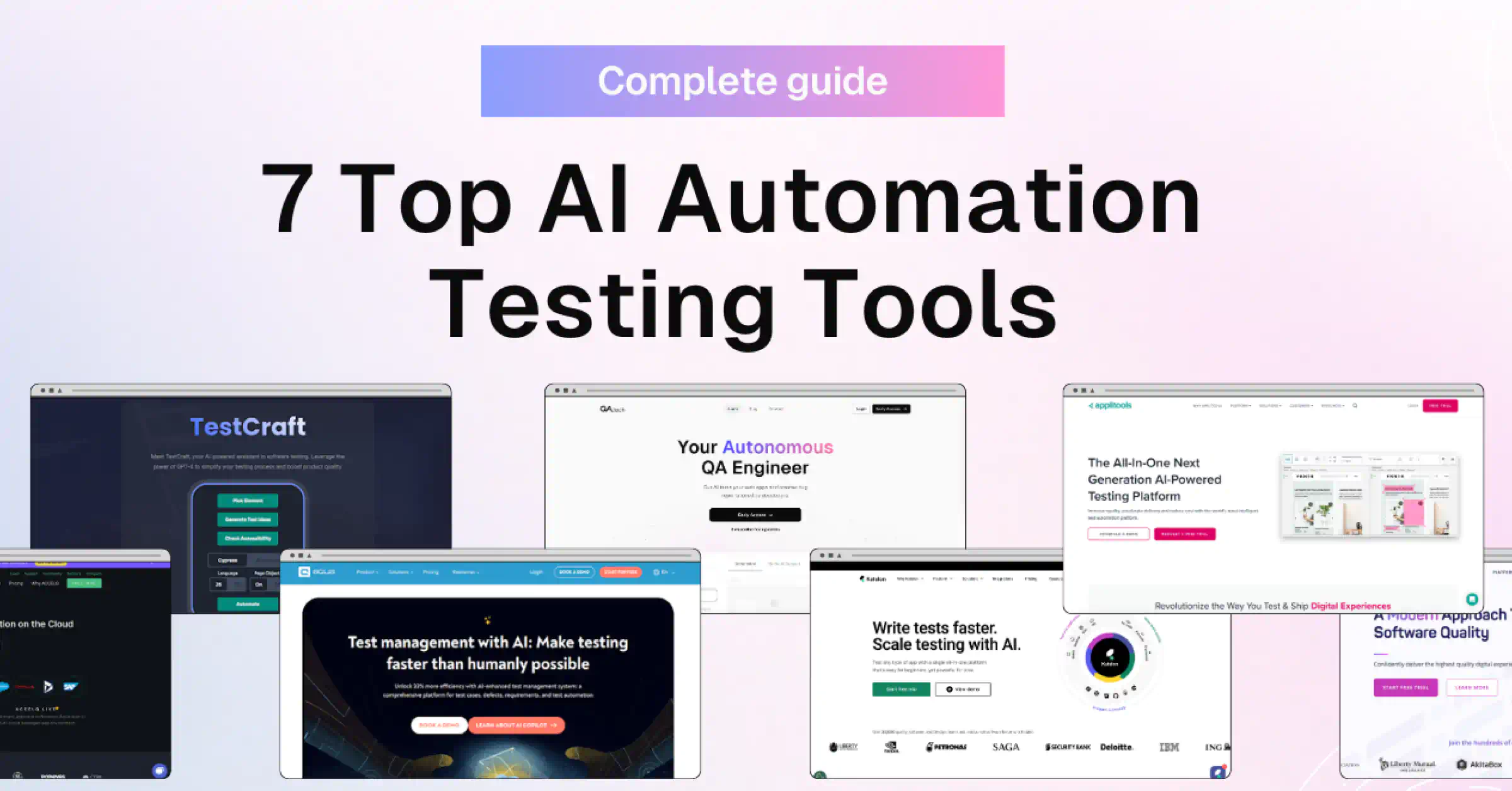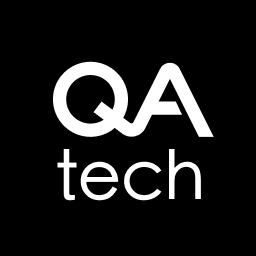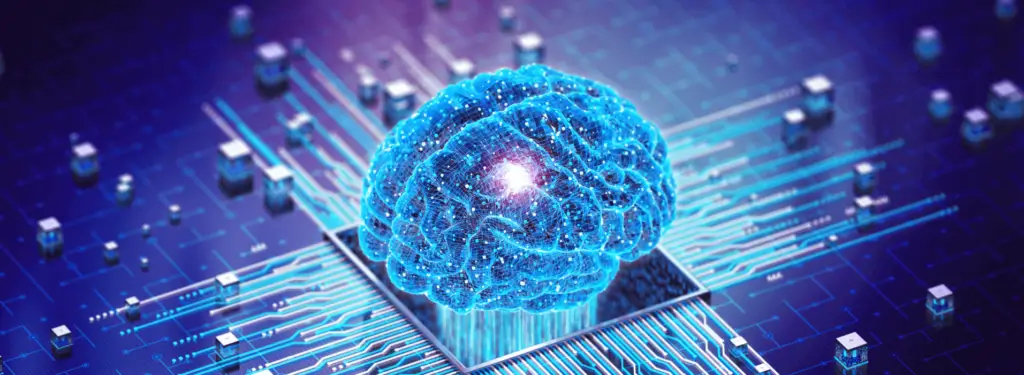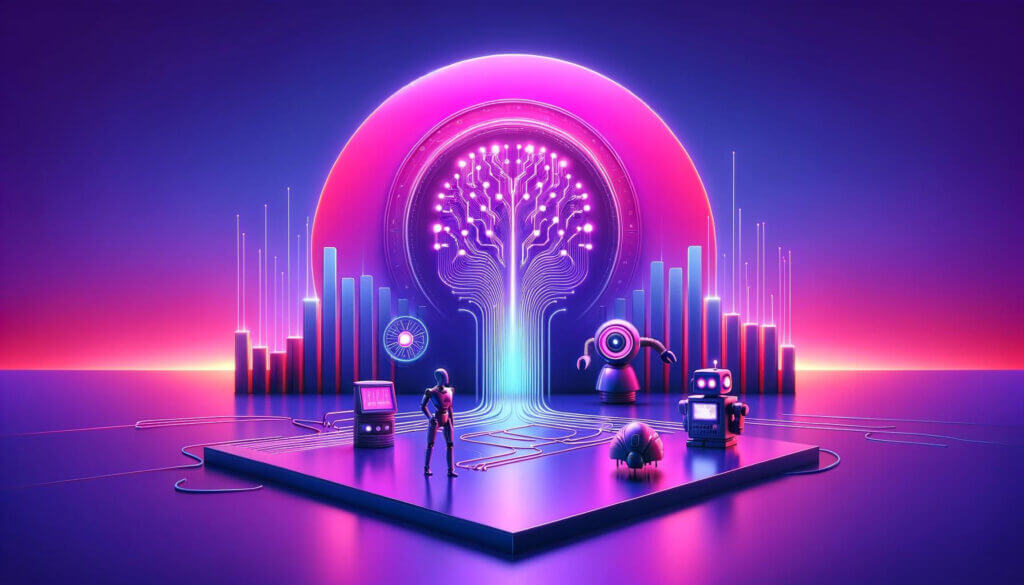Product development has gotten so much better since software engineers started embracing AI. According to GitHub’s June 2023 survey, 92 percent of US-based developers use AI coding tools for official and personal projects. These tools can automate various stages of the product development life cycle (SDLC) and deliver reliable products faster than ever.
Besides expediting development through automation, AI algorithms enhance testing and quality assurance by predicting potential bugs or defects. Product testers can leverage predictive analytics to identify flaws in the product and correct them early enough before they slip into the hands of users.
There are several real-world examples of companies successfully applying AI in product development. In this article, you’ll learn how to integrate it into your product development process.
Read on to learn more about the role of artificial intelligence in new product development.
What Is AI in Product Development?
AI in product development involves using various artificial intelligence technologies to create or improve products. These technologies include machine learning (ML), natural language processing (NLP), and computer vision.
The use of generative AI in product engineering has quietly evolved for years, with top companies experimenting with AI algorithms for product design as early as 2015. Thanks to rapid improvements in deep learning, product developers have unlocked even more capabilities that are now fully integrated into present-day product design workflows.
Machine learning algorithms, for example, can analyze large datasets to find patterns that help predict system failures or bugs before they occur. NLP can automatically generate documentation from code comments, and computer vision can help test graphical user interfaces (GUIs).
What Is the Role of Artificial Intelligence in New Product Development?
Artificial intelligence can improve product development in the following ways:
1. Product Architecture Design
One famed role of artificial intelligence in new product development is the use of generative design and reinforcement learning techniques to facilitate product architecture design. AI-powered generative design algorithms can explore numerous design options based on set parameters.
These algorithms consider different design constraints and goals to autonomously generate design alternatives that human designers can ignore. Reinforcement learning also improves designs by repeatedly studying and improving design choices based on feedback from simulations and actual use data.
2. Automatic Code Generation
AI also helps create code automatically from requirements or specifications. It does this through machine learning models, especially those in natural language processing (NLP) and deep learning. NLP models can understand requirements or specifications written in natural language and automatically generate the corresponding code.
Another way product teams can automate code generation is through annotation processors. This method involves the use of annotations to trigger code generation during compilation. This automated approach dramatically reduces the amount of manual coding testers need to do.
3. Product Development Strategy
AI supports product development strategy through predictive analytics and decision support systems. Machine learning algorithms analyze large data sets, such as market trends, customer preferences, and competitor performance, to forecast demand, spot new opportunities, and optimize product portfolios.
AI-driven decision support systems help product teams to make strategic decisions.
Take, for instance, a product team tasked with a project similar to their previous work. They can extract insights from their historical data to estimate the time and resources needed to develop the new product.
4. Rapid Prototyping
When it’s time to turn ideas into realistic proofs of concept, product development artificial intelligence expedites the process. Leveraging machine learning techniques, product teams can quickly examine design iterations, user input, and performance metrics to improve prototypes.
When dealing with physical prototypes, you’ll need computer vision to speed up the prototype validation by automating measurements, design comparisons, and quality inspections. The process gets even better when using AI-powered simulation tools to visualize how a product will work in different situations.
5. Quality Assurance
Developers also use AI in Quality Assurance. They automate testing procedures through machine learning and eliminate the manual effort required to generate and execute test cases. Unlike human testers, these tools can run multiple tests simultaneously, so quality assurance teams can efficiently broaden their test coverage.
AI systems monitor massive production data to detect unusual patterns, faults, or quality issues to ensure that products are reliable. AI-driven predictive maintenance uses machine learning to predict potential breakdowns or quality concerns. AI brings immense value to optimizing testing processes.
Benefits of AI in Product Development
Using AI for product development keeps you ahead of the game. Here’s what you stand to gain:
1. More Creativity
AI boosts creativity in product design through generative design algorithms. These tools help product teams explore broader design possibilities, often surpassing human imagination. Designs are created simply by inputting various design criteria, such as structural requirements and material properties.
The algorithms then autonomously generate diverse and often unconventional design ideas. Some of these ideas may be impractical or infeasible to explore manually, but exploring them can help you develop groundbreaking solutions.
2. Faster Time-to-Market
AI speeds up product development by automating repetitive tasks, including code generation, testing, and data analysis.
According to McKinsey, AI can reduce coding time by 20 – 45 percent. But it doesn’t stop there. It also facilitates rapid prototyping. By automating 3D modeling, rendering, and virtual prototyping, product teams can swiftly translate design concepts into physical or digital prototypes.
Using AI for product development enables comprehensive validation of product concepts in a fraction of the time required for traditional physical prototyping. Also, NLP tools contribute to faster product delivery by generating technical documentation or translating them.
3. Vast Computation Capability
AI can quickly handle complex tasks in record time with powerful processing capabilities. A typical example is in parallel testing, where AI algorithms simultaneously execute multiple test cases across different environments.
Also, AI’s vast computational ability enables it to handle data-intensive tasks, including pattern recognition and predictive analytics. It allows the sharing of computational tasks across multiple computers and algorithms simultaneously. This way, product engineers can speed up the training of sophisticated machine learning models.
4. Optimal Decision-making
Product developers can make better decisions using insights from AI-powered tools. For example, when running autonomous tests with QA.Tech, the platform alerts you with comments about your product’s flaws or defects and how to resolve them.
Moreover, AI-powered tools can analyze project requirements to recommend suitable programming languages and libraries that align with the project goals. Similarly, it can examine data on a system’s requirements and user behavior to recommend the best architectural patterns for a new product.
5. Improved Product Quality
AI product development leads to higher quality because testing processes are automated. Using an automated approach eliminates errors in quality assurance because the same steps and checks are conducted consistently each time they are executed.
Moreover, automated tests can cover a broader range of test cases and scenarios than manual testing within the same time frame. A comprehensive test coverage reduces the likelihood of critical defects slipping through the cracks. And if you forget to rerun regression tests after making code changes, automated regression testing helps to ensure that existing features still work as expected.
Real-life Examples of Using AI Product Development
Here are three notable examples of real people and brands that have successfully applied AI in product development:
1. Philippe Starck’s Collaboration with Kartell and Autodesk
French designer Philippe Starck collaborated with Kartell and Autodesk to create a chair using a generative design AI algorithm. The chair was unveiled at Salone del Mobile 2019 and is considered the first-ever production chair created by AI in collaboration with humans.
Starck provided the overall vision and parameters for the chair, and the generative design algorithm provided various options that would meet Kartell’s injection molding manufacturing. The AI chair is still available for purchase today and can be bought in sets of two on Kartell’s website.
2. Diffblue Automates Code For Industry Giants
Diffblue, an AI-for-code software company, has successfully automated code for industry leaders like Citi, JPMorgan, Goldman Sachs, Amazon Web Services, and Cisco. This company’s flagship software, Diffblue Cover, is an AI-powered tool that automatically generates Java unit test code.
With the ability to autonomously generate thousands of correct test codes within a brief time, these large-scale enterprises can deliver higher-quality products at an accelerated pace. To demonstrate their confidence, Citi made a strategic investment in Diffblue in 2023.
3. G4 Technology Co
G4 Technology Co., Ltd in Taiwan has developed an AI Defect Inspection System. It combines AI visual inspection software with deep learning capabilities to analyze images captured by an industrial camera and high-resolution lens. The system can automatically detect, mark, and categorize PCB defects in real time.
G4 Technology focuses on developing imaging solutions for machine vision and Automated Optical Inspection (AOI). Their goal is to help businesses use machine vision technology effectively.
How to Integrate QA Testing and AI in Product Development
Integrating AI in new product development is a strategic process. Here are the steps you need to follow:
1. Identify AI Integration Opportunities.
To leverage AI in product development, you must discover potential areas where AI can add value, meaning the processes within your product development lifecycle that are time-consuming, repetitive, or resource-intensive.
Tasks that involve large volumes of data, such as data analysis and pattern recognition are also well-suited for AI applications. But how do you identify these opportunities?
Talk with QA and development teams. Conduct workshops, brainstorming sessions, and process mapping to identify specific bottlenecks and challenges in current testing processes.
2. Assess Your Company’s Technical Infrastructure
Compatibility is a critical factor when integrating AI into product development. You may purchase AI solutions incompatible with your systems if you don’t consider your technical infrastructure first.
During the assessment, your team examines all the hardware, software, networks, and data storage systems to determine their capacity to support AI-based testing solutions.
Look for APIs, plugins, or other integration methods to sync AI testing tools into your existing workflow. Finally, check the amount of data you have and assess whether it’s qualified for training machine learning models.
3. Prioritize Use Cases
When starting AI product development, you should focus on the most vital integration opportunities. In other words, try streamlining processes that yield the highest return on investment first.
The most essential use cases differ based on the project type and a company’s goals. If the aim is to launch new products quickly in the market and improve quality with time, the most essential use cases would be those that speed up the development life cycle. In this case, automated code generation and autonomous testing would be more important than bug detection.
4. Research AI-powered Testing Tools
After defining your most important AI use cases, the next step is to look for the best AI automation testing tools that will handle your project requirements and connect seamlessly with your systems. Reputable technology publications like TechCrunch and ZDNet often feature reviews and comparisons of various AI testing tools.
You can also check Gartner, Forrester, and G2 Crowd for detailed user reviews and ratings of several AI testing tools. Stack Overflow, Reddit communities, and LinkedIn groups are also helpful sources.
Here, you’ll find industry professionals sharing their firsthand experiences with the AI testing tools they’ve used.
5. Schedule a Demo
Before investing in an AI product development solution, you must ensure it can handle your project. Take advantage of demos to get hands-on experience with the tool. Demos and free trials allow your team to get acquainted with the interface, explore various functions, and feel how these functions streamline their workflows.
During the demo period, test how the tool handles real-life testing tasks. Then, collect feedback from users who tried it out. If this AI solution performs well, a demo might be all you need to promote user buy-in.
6. Train Teams to Use AI Tools
To maximize the benefits of your AI QA tool, you must ensure that your product team can use the platform efficiently. Provide technical education and hands-on experience for your team. Some tools may offer comprehensive user guides and tutorials to help you get along quickly.
Others may offer separate support packages, especially if the platform is complicated. Also, it’s helpful to create a supportive environment where team members can explore and learn from their mistakes.
7. Define and Monitor Key Performance Indicators
Now you have your AI product development systems up and running, you have to measure how effective these tools are. Otherwise, how can you determine if they are worth the investment? Ideally, product development tools offer clear reports to help you see how much time you’ve saved on testing processes or how efficient bug detection is. These KPIs help you find areas of improvement.
What Is the Future of AI in Product Development?
While AI has made notable progress, it is still in its early stages, with immense growth potential. The current applications of AI, particularly in product development, are laying the groundwork for a future where AI-driven systems will evolve to such an extent that they become more autonomous and independent in their decision-making capabilities.
When this happens, we’ll have a new product development landscape where AI does not just assist in tasks but makes critical decisions with minimal human intervention.
Regarding autonomy, QA Tech is already leading with powerful autonomous QA features. This product testing platform automates and optimizes testing workflows, and this AI solution could be the next big thing in quality assurance.
How QA.Tech Helps Product Development Companies Increase Productivity
AI product development is here to stay, and forward-thinking companies are increasingly integrating these tools to unlock progress and push boundaries. Hop on the winning bandwagon and elevate your company’s capacity to deliver high-quality products at scale.
With QA.Tech, you can execute autonomous test cases and free up your product team to do more high-value work simultaneously. Why not give it a try today? Contact the support team to gain early access.


